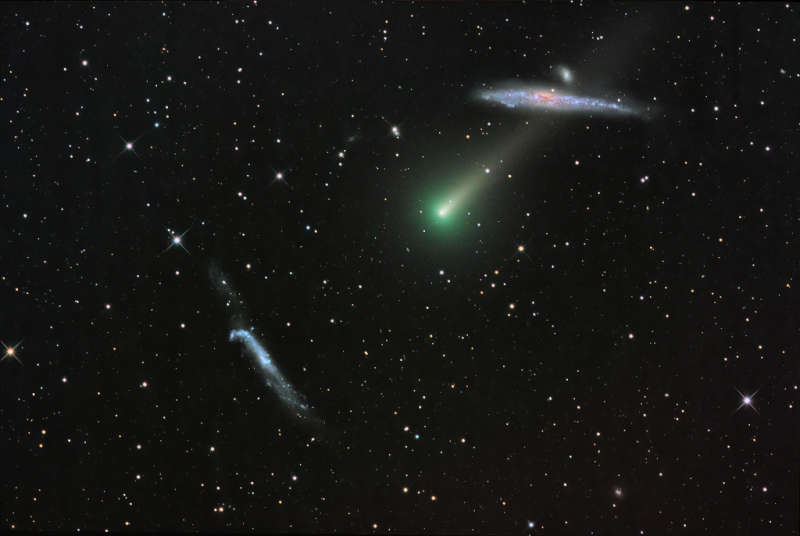
|
Credit & Copyright: Gregg Ruppel
Explanation:
Sweeping through
northern predawn skies, on November 24
Comet Leonard (C/2021 A1)
was caught between
two galaxies in this
composite telescopic
image.
Sporting a greenish coma the comet's dusty tail seems to harpoon the
heart
of NGC 4631 (top) also known as the Whale Galaxy.
Of course
NGC 4631 and NGC 4656
(bottom, aka the Hockey Stick)
are background galaxies some 25 million light-years away.
On that date the comet was about 6 light-minutes from our fair planet.
Its closest approach to Earth (and even closer approach
to Venus)
still to come,
Comet
Leonard will
grow brighter in December.
Already
a good object
for binoculars and small telescopes,
this comet will likely not return to the inner Solar System.
Its perihelion, or closest approach to the Sun, will be on January 3, 2022.
|
January February March April May June July August September October November December |
| ||||||||||||||||||||||||||||||||||||||||||||||||
NASA Web Site Statements, Warnings, and Disclaimers
NASA Official: Jay Norris. Specific rights apply.
A service of: LHEA at NASA / GSFC
& Michigan Tech. U.
Based on Astronomy Picture
Of the Day
Publications with keywords: comet - galaxies
Publications with words: comet - galaxies
See also:
- APOD: 2025 November 17 Á Comet Lemmons Wandering Tail
- APOD: 2025 September 30 Á Comet Lemmon Brightens
- APOD: 2025 September 29 Á Two Camera Comets in One Sky
- APOD: 2025 September 26 Á A SWAN an ATLAS and Mars
- APOD: 2025 September 18 Á Comet C/2025 R2 SWAN
- APOD: 2025 September 16 Á New Comet SWAN25B over Mexico
- APOD: 2025 August 28 Á Galaxies, Stars, and Dust
